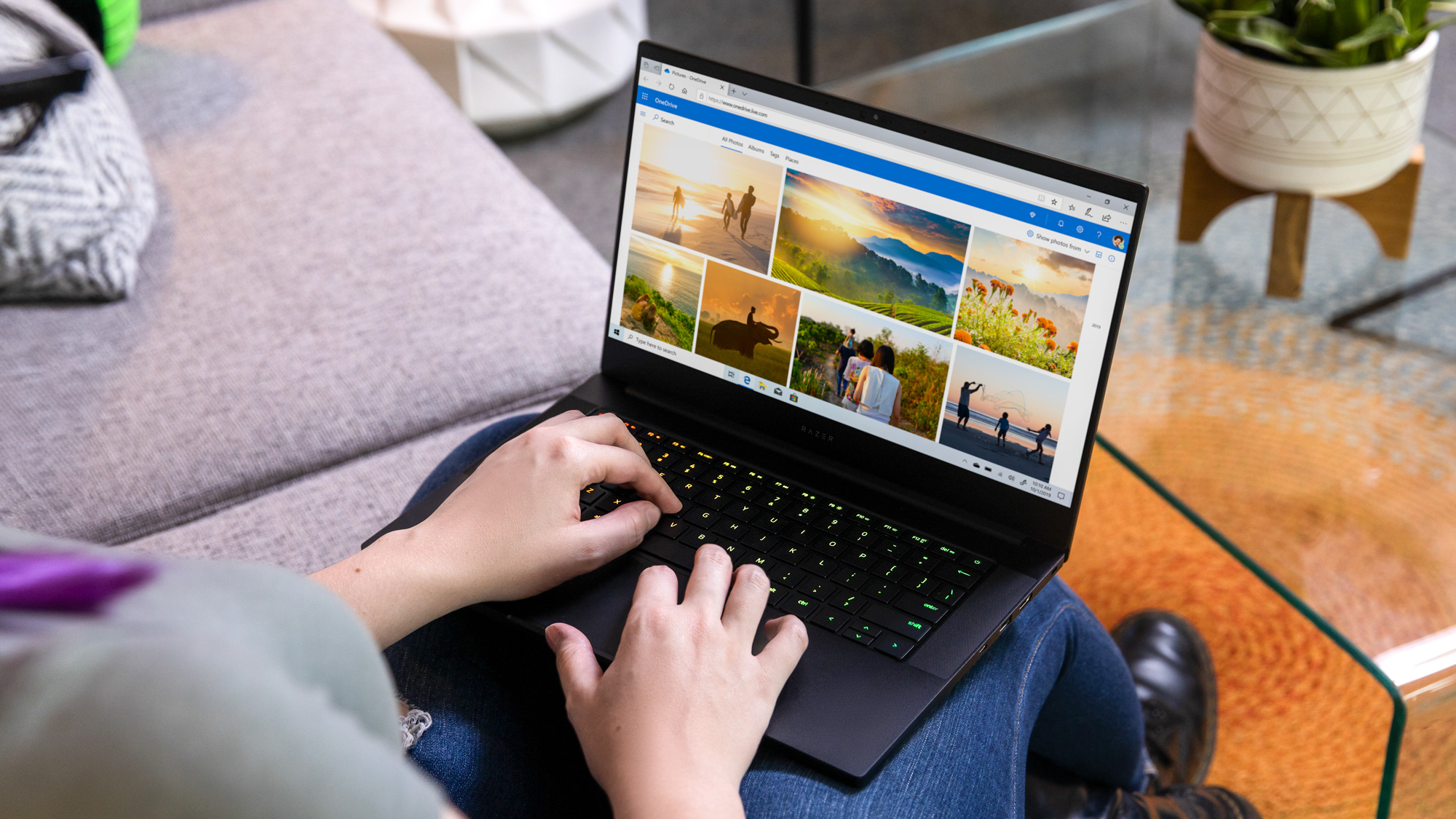Samsung’s new 90Hz OLED displays could be a huge upgrade for gaming laptops
Samsung Display's 90Hz OLED displays could be the gaming laptop upgrade we're looking for

Some of the best gaming laptops come with impressive displays with very fast refresh rates, but arguably the screen tech they use is a bit dated. LCD screens can be very good, but they — quite literally — pale in comparison to the colors, contrast and brightness of OLED panels.
But that could change, as Samsung Display has started mass production of its new 90Hz OLED laptop panels. And that could pave the way for gaming laptops with superior screens when it comes to colors and contrast, yet still have a refresh rate that makes for smooth gaming.
- Here are the best gaming monitors from 2021
- These are the best gaming laptops right now
- Plus: Battlefield 2042 will be delayed until November
OLED displays in laptops are nothing new, after all, we have the Dell XPS 15 OLED and the Samsung Galaxy Book Pro 360, but they are far from prolific. And gaming laptops with OLED panels are very rare; there's the Razer Blade 15 Advanced, but it's very expensive and has a display limited to 60Hz.
Such a refresh rate isn't ideal for modern laptop gaming when the likes of the Acer Predator Triton 500 have a refresh rate of 300Hz. For the uninitiated, a high refresh rate is ideal for getting smoother action in fast-paced games like Rainbow Six Siege and Doom Eternal, which is why a lot of gaming laptops tend to have displays that clock in at 120Hz or higher.
As it stands, high-refresh-rate OLED displays are only found in TVs or a few very expensive gaming monitors; there's no laptop, gaming or otherwise, with a high-refresh-rate OLED display. That's why Samsung Display's 90Hz OLED laptop panels are noteworthy.
While these panels might not reach the heady speeds of some LCD displays in the most recent gaming laptops, they still offer a 50% improvement in refresh rate over existing laptops with OLED displays. And while 90Hz is not the most desirable refresh rate for gaming, it's still a good start as it would be a good middle ground between 60Hz and the 120Hz refresh rates.
It's also worth remembering that to really take advantage of a high refresh rate display, you need a machine with the graphics grunt to hit high frame rates at native resolutions of 1080p, 1440p, or in some cases 4K. Hitting 90 frames per second to max out a 90Hz display in Cyberpunk 2077 for example, is a lot easier than hitting the 120 fps needed to get the best out of a 120Hz panel.
Sign up to get the BEST of Tom's Guide direct to your inbox.
Get instant access to breaking news, the hottest reviews, great deals and helpful tips.
So 90Hz OLED panels would tread the line between delivering the advantages of improved overall visual quality, but still have a refresh rate for smooth gaming when running titles at high graphics settings.
As its stands, Samsung hasn't said it will make 90Hz OLED panels available for gaming laptops. Rather, the laptops these displays appear to be targeted at are for professional use, with the 14-inch Asus Zenbook being one of the first to use the new 90Hz displays.
But Asus makes gaming laptops, and with Samsung Display being a major supplier of screens for all manner of devices, we suspect it won't be too long before gaming laptops get 90Hz OLED panels as an option.

Denise is a Life Reporter at Newsweek, covering everything lifestyle-related, including health, relationships, personal finance, beauty and more. She was formerly a news writer at Tom’s Guide, regularly producing stories on all things tech, gaming software/hardware, fitness, streaming, and more. Her published content ranges from short-form news articles to long-form pieces, including reviews, buying guides, how-tos, and features. When she's not playing horror games, she can be found exploring East London with her adorable puppy. She’s also a part-time piano enthusiast and regularly experiments in the kitchen.
